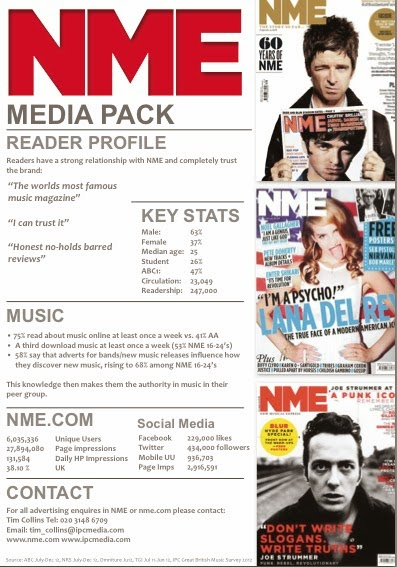All of the magazines featured on this blog have a very distinct and definitive brand identity.
Brand identity is how all the elements that contribute to the visual appearance work together to distinguish that brand in the mind of the audience/ consumer. This could be the use of colour, fonts, style of imagery, layout and house style. All successful brands work very hard to establish this recognition within their audience/ target market.
How is the brand identity of the magazine presented?
Is it cool, sophisticated, minimal, elegant, opulent, young, messy, informal, modern, tasteful, controversial, interesting, unusual, challenging?
Your job is to do the same for your music magazine. You want it to be original, unique and distinctive from other brands. You want it to make a clear statement that is going to appeal to your target audience and you want it to display the core brand values.
Brand values are things that are deemed important by a brand, the things that it stands for and it represents.
For example; youthful, fun, excitement, future, modernity, fashion, style, technology, charity, generosity, establishment, originality, ideas, culture, social activity, edginess
In relation to a music magazine it is clear that it will value the genre(s) of music it represents. Consider how NME establishes its brand values.
It is built upon a love for new music, for supporting young and upcoming talent that are true to the basics of live music. It values the joy that music brings to life and the excitement of finding new artists that inspire and innovate. Think about how they approach this.
You now need to start to establish the brand identity and brand values for your own music magazine but before that do an analysis of the brand identify and brand values of one existing music magazine other than NME.


































